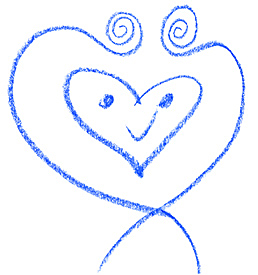In my studies with Thomas Huebl, I am learning about space, energy and structure. I've studied these qualities through other lenses such as Yoga in the Himalayan tradition and the work of the Hendricks, and always find it interesting to bring in new perspectives.
Space correlates with being-ness, the root chakra, and the right and space to be here in life. It also connects us with stillness, consciousness and the capacity to witness. Energy correlates with becoming, learning and evolving, movement up the spine, and movement generally. There are many aspects of structure such as things that make up the material world and most intimately, our physical body, which is a complex, evolutionary structure. Structure correlates with the manifestation of life into form, with the horizontal field of connecting with others, and our belonging in life.
In this post, I want to focus on the structure of belonging, which is the aspect of our relational networks and the ways we are connected with other people, animals, our environment, our planet, and the systems that are part of our lives today. Examples of systems include governments, voting processes, medical care, money and banking systems, etc. So often when we think of these larger structures which began long before we were born, we feel disconnected from them and see them as something other than ourselves which we cannot impact. From an energetic point of view, these structures are actually part of us, and we are part of them. We are always contributing something to the structures of our lives, and they are contributing something to our lives. (Part of the study of systemic oppression is how the systems we live in impact different groups of people differently, as well as the history and purpose of such differences.) When we believe we are disconnected, nonessential or helpless related to our relational structures and systems, what we contribute is our absence.
Absence is a symptom of trauma, and we all carry some trauma. In other words, we all carry many or fewer symptoms of separation or absence within and around us. This is not bad, per se, as absence serves a function. When we or our ancestors were unable to face and deal with something in an integrated way, separation occurred. When it was too much to process, the human nervous system wisely numbed what was overwhelming and could put our survival or functioning at risk. Today we can call this absence (or trauma).
Turning toward our own absence related to the structures around us is the first step toward healing and restoration. What we can (begin to) witness can begin to move, heal, and gradually be reconnected into wholeness.
Even when we cannot see the results of our participation with the systems around us, our contribution always matters regardless of how small or insignificant it may seem. Since we are in effect an individual manifestation of life, nature, and of the divine, it is up to us to discover what is our appropriate relation, participation and contribution to the structures in and around us.
When we discover and enact our unique participation with our relational structures and systems, we contribute to healing our belonging. Since each being alive in this moment belongs to life, restoring our belonging through right relationship ripples out and contributes to restoring belonging for all of us. I believe our individual movements to participate and restore right relation with our structures and systems is fundamentally our purpose, each in our own unique way.
May this year be a year when we all fine-tune our presence so that our unique participation contributes a healing, restorative flow into the structures in our beautiful world.






